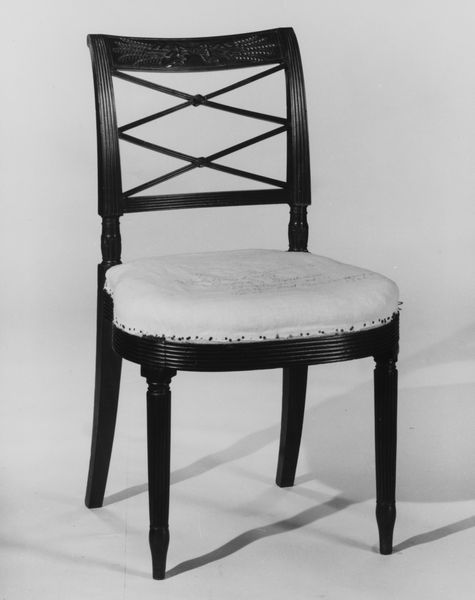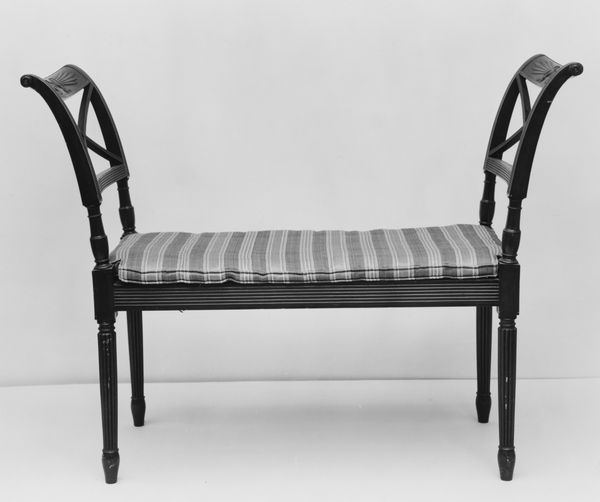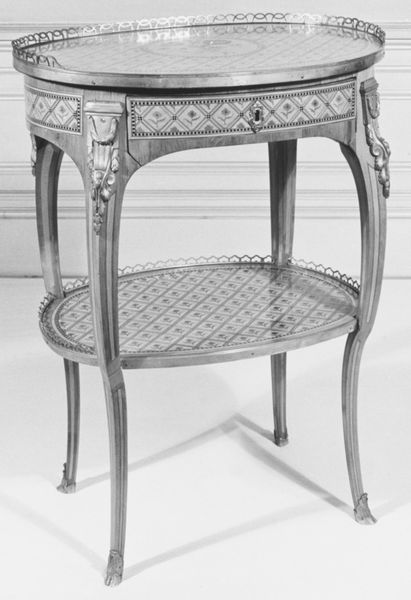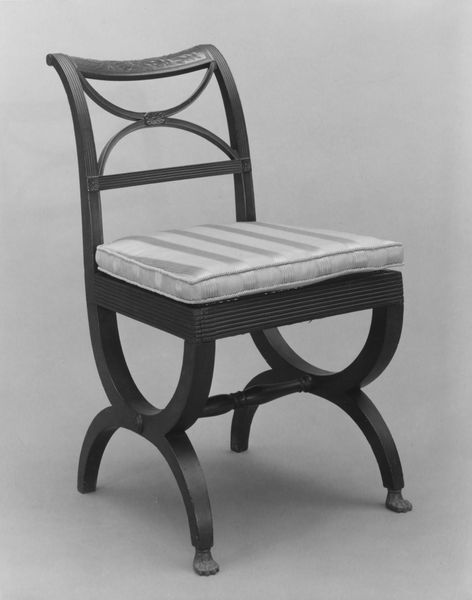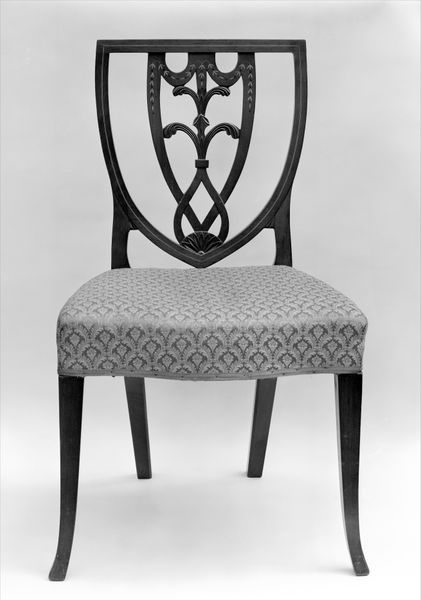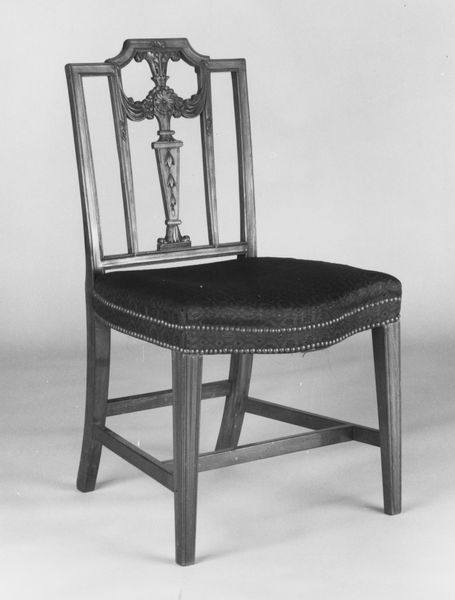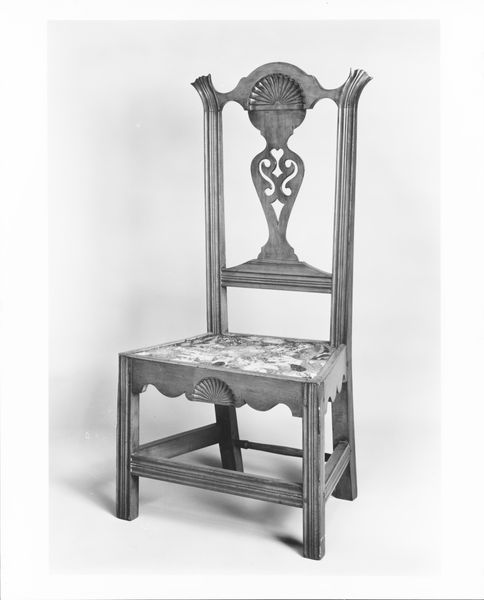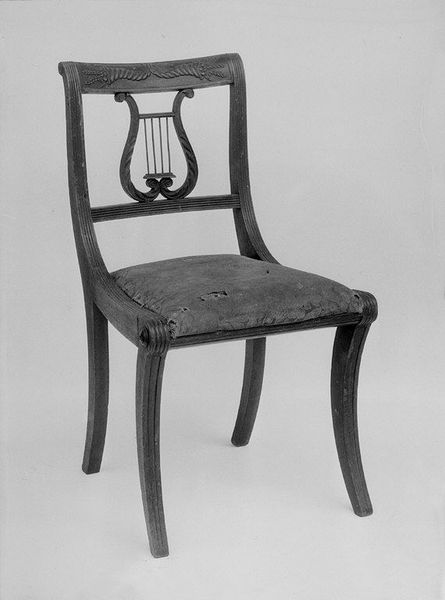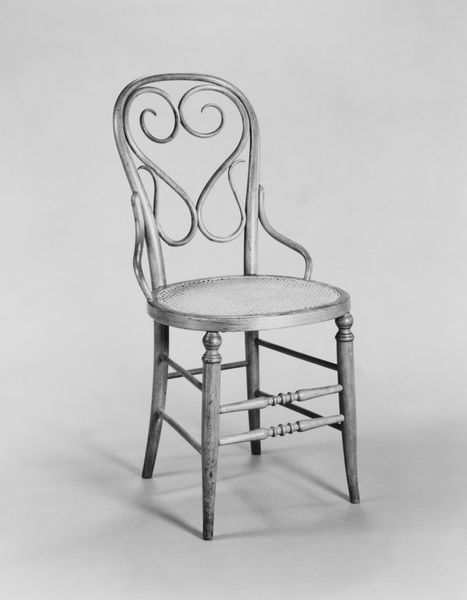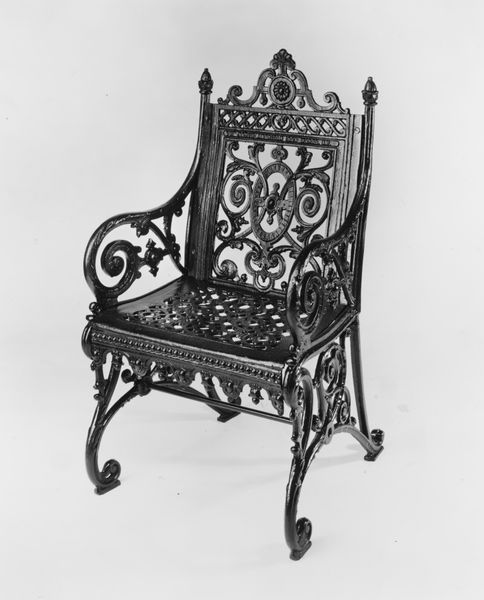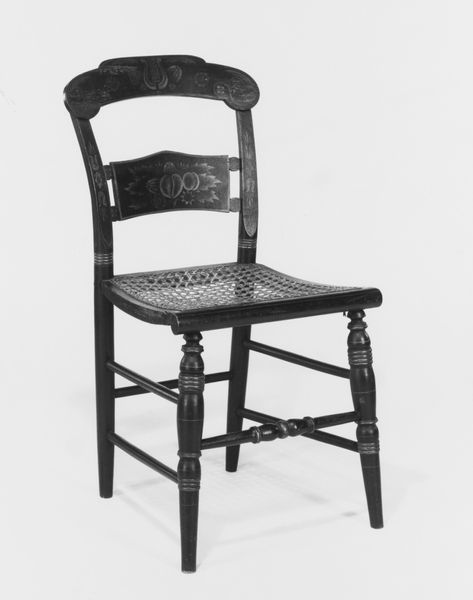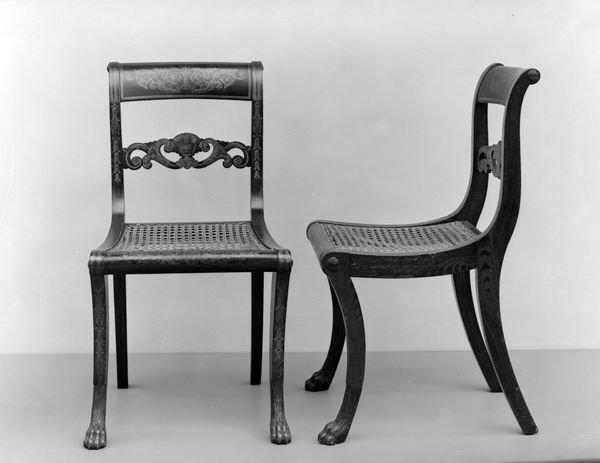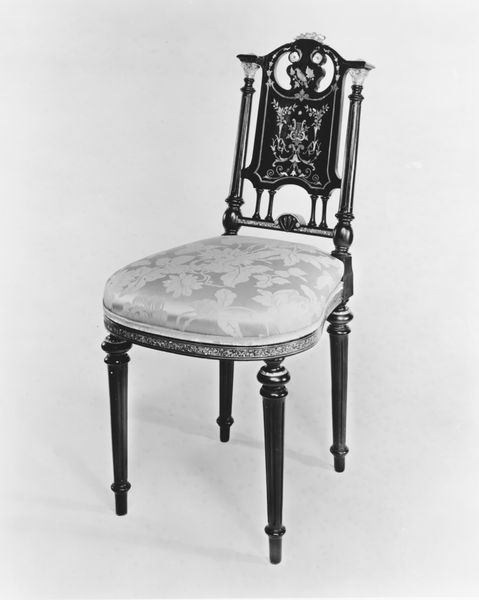
carving, sculpture, wood
#
neoclacissism
#
carving
#
sculpture
#
furniture
#
form
#
geometric
#
sculpture
#
united-states
#
wood
#
decorative-art
Dimensions: 36 x 22 1/2 x 18 in. (91.4 x 57.2 x 45.7 cm)
Copyright: Public Domain
Curator: Let's talk about this elegant "Side Chair" crafted between 1792 and 1795 by Slover and Taylor, currently residing here at the Met. Editor: Its immediate impression is one of lightness despite its solid form. Those elongated legs and slender back give it an almost skeletal grace. Curator: Absolutely. The Neoclassical style shines through – see how the geometric forms and the symmetry speak to that era’s fascination with classical antiquity? Those vertical lines on the legs mirror the colonnade motif of the chair back, suggesting both stability and upward aspiration. Editor: I find the focus on carving significant; it's a material statement about skill. But I also see the social function of this kind of decorative art. This isn't just a functional object, is it? It embodies status and a refined taste achieved through material means and excellent artisanal expertise. Curator: Indeed, and even consider how a seemingly minor element – those decorative studs tracing the edge of the seat – lend both a tactile and visual element of preciousness to it, echoing larger trends towards increased decoration in furniture. The design choices evoke a sense of cultivated taste. Editor: Taste as a commodity. And the fact that it's made of wood reinforces that. Wood can be both plentiful and precious depending on the carving involved, its joinery. One wonders what shop the creators belonged to, how labor was divided... these pieces tell stories about the lives of makers. Curator: I agree that the makers’ context matters. I am also fascinated by what it represents: an embrace of enlightenment values reinterpreted through an American lens during a formative period in our nation’s history, one still shaping the symbolic language we use today. Editor: Ultimately, viewing this chair forces one to acknowledge that even seemingly functional forms hold immense layers of social history and artisanal meaning. It's much more than meets the eye.
Comments
No comments
Be the first to comment and join the conversation on the ultimate creative platform.
